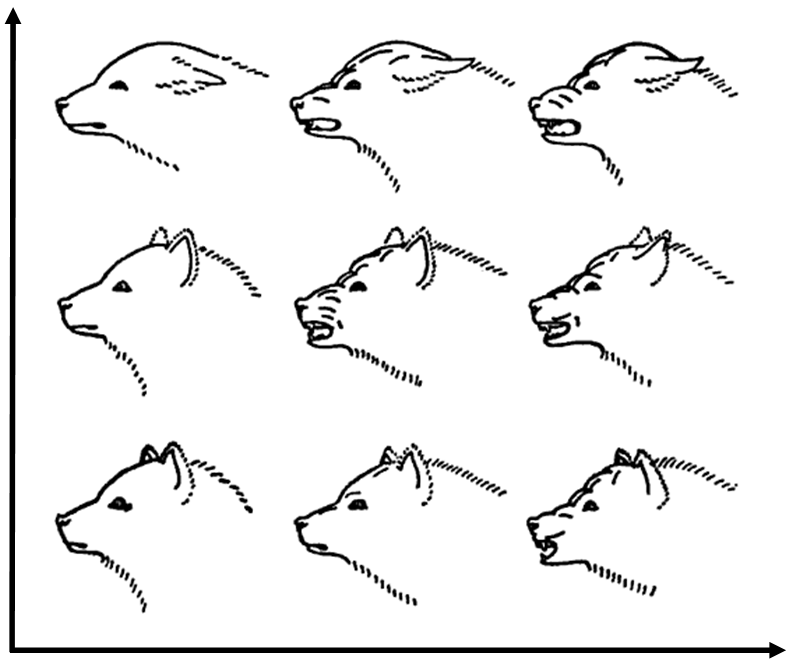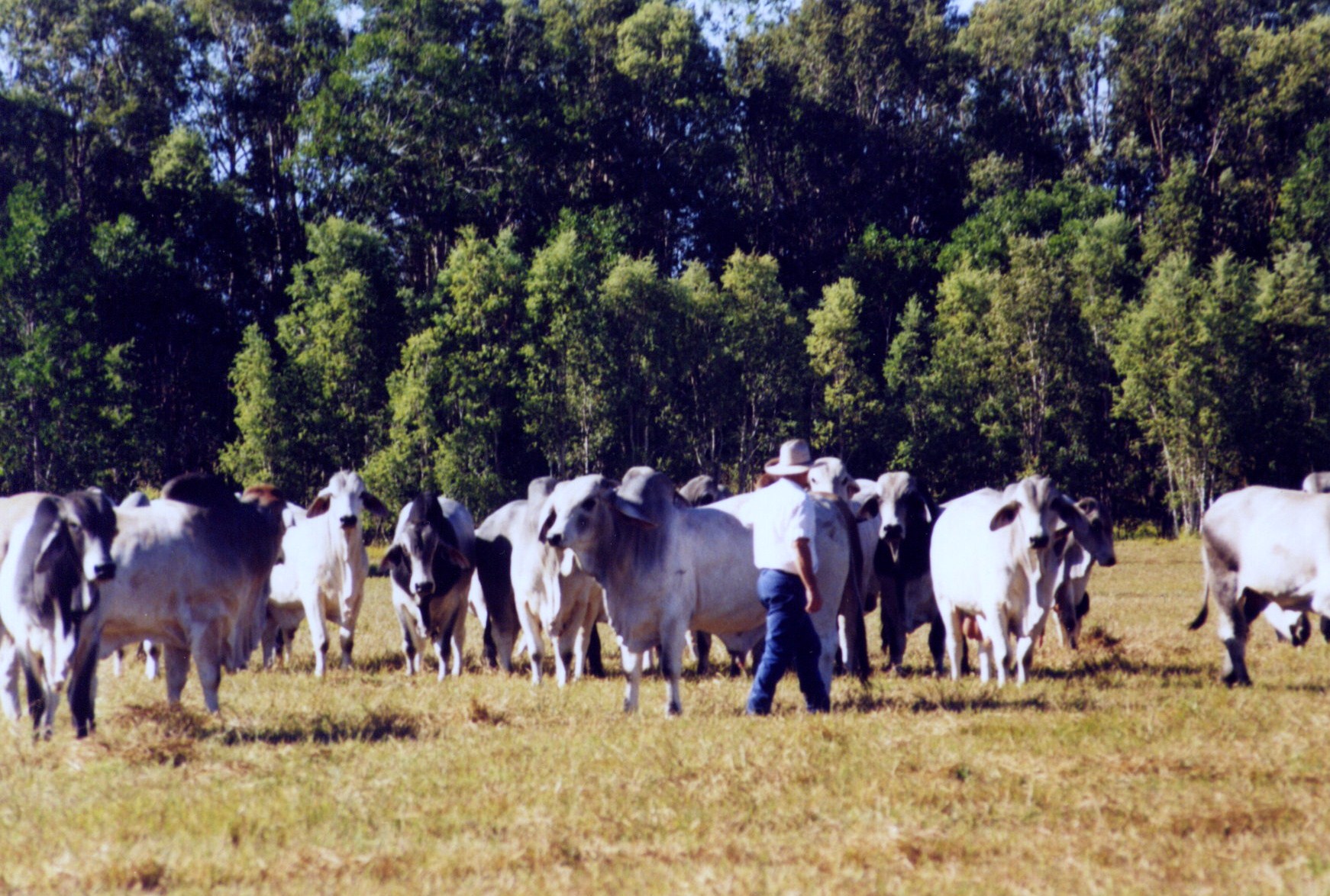|
Catch Dog
A catch dog is a specially trained dog that is used to catch large animals in hunting, working livestock, and baiting. As hunters, catch dogs are contrasted with bay dogs who corner prey animals and alert their handler by howling, or baying. Catch dogs are typically outfitted with chest armor to prevent being speared by the boar's tusk, and neck armor to prevent neck injury. As livestock dogs, catch dogs use their weight and teeth to immobilize live animals so that they can be captured, or literally hogtied, by the dog's handlers, who may be stockmen, hunters, butchers, or farmers. Terminology According to the 2009 edition of Webster's Dictionary of American English, the term "catch dog" is a noun phrase referring to a dog used or bred for working livestock. The entry identifies the term as being American, and dating to circa 1857, although the practice is known to date at least back to the ancient Romans. Boar hunting dogs Catch dogs physically take hold of the boar, typ ... [...More Info...] [...Related Items...] OR: [Wikipedia] [Google] [Baidu] |
Calydonian Hunt
The Calydonian boar hunt is one of the great heroic adventures in Greek legend. It occurred in the generation prior to that of the Trojan War, and stands alongside the other great heroic adventure of that generation, the voyage of the Argonauts, which preceded it. The purpose of the hunt was to kill the Calydonian boar (also called the Aetolian boar), which had been sent by Artemis to ravage the region of Calydon in Aetolia, because its king Oeneus had failed to honour her in his rites to the gods. The hunters, led by the hero Meleager, included many of the foremost heroes of Greece. In most accounts it is also concluded that a great heroine, Atalanta, won its hide by first wounding it with an arrow. This outraged many of the men, leading to a tragic dispute. Importance in Greek mythology and art Since the Calydonian boar hunt drew together numerous heroes—among whom were many who were venerated as progenitors of their local ruling houses among tribal groups of Hellenes into ... [...More Info...] [...Related Items...] OR: [Wikipedia] [Google] [Baidu] |
Hunting
Hunting is the Human activity, human practice of seeking, pursuing, capturing, and killing wildlife or feral animals. The most common reasons for humans to hunt are to obtain the animal's body for meat and useful animal products (fur/hide (skin), hide, bone/tusks, horn (anatomy), horn/antler, etc.), for recreation/taxidermy (see trophy hunting), although it may also be done for resourceful reasons such as removing predators dangerous to humans or domestic animals (e.g. wolf hunting), to pest control, eliminate pest (organism), pests and nuisance animals that damage crops/livestock/poultry or zoonosis, spread diseases (see varmint hunting, varminting), for trade/tourism (see safari), or for conservation biology, ecological conservation against overpopulation and invasive species (commonly called a culling#Wildlife, cull). Recreationally hunted species are generally referred to as the ''game (food), game'', and are usually mammals and birds. A person participating in a hunt is a ... [...More Info...] [...Related Items...] OR: [Wikipedia] [Google] [Baidu] |
Dog-baiting
Baiting is a blood sport where an animal is worried or tormented against another animal, for the purpose of entertainment or gambling.Hoage, Robert J., Roskell, Anne and Mansour, Jane, "Menageries and Zoos to 1900", in ''New World, New Animals: From Menagerie to Zoological Park in the Nineteenth Century'', Hoage, Robert J. and Deiss, William A. (ed.), Johns Hopkins University Press, Baltimore, 1996, pp.8-18. The Penal Code Act, 2008 . sudantribune.com This activity is illegal in most countries with varying levels of enforcement. History During various periods of history and in different cultures around the world, various types of baiting, named for the species used, have been confirmed. These include[...More Info...] [...Related Items...] OR: [Wikipedia] [Google] [Baidu] |
Bay Dog
A bay is a recessed, coastal body of water that directly connects to a larger main body of water, such as an ocean, a lake, or another bay. A large bay is usually called a ''gulf'', ''sea'', ''sound'', or ''bight''. A ''cove'' is a small, circular bay with a narrow entrance. A ''fjord'' is an elongated bay formed by glacial action. The term ''embayment'' is also used for , such as extinct bays or freshwater environments. A bay can be the estuary of a river, such as the Chesapeake Bay, an estuary of the Susquehanna River. Bays may also be nested within each other; for example, James Bay is an arm of Hudson Bay in northeastern Canada. Some large bays, such as the Bay of Bengal and Hudson Bay, have varied marine geology. The land surrounding a bay often reduces the strength of winds and blocks waves. Bays may have as wide a variety of shoreline characteristics as other shorelines. In some cases, bays have beaches, which "are usually characterized by a steep upper foreshore wit ... [...More Info...] [...Related Items...] OR: [Wikipedia] [Google] [Baidu] |
Baying
Dog communication refers to the methods dogs use to transfer information to other dogs, animals, and humans. Dogs may exchange information vocally, visually, or through smell. Visual communication includes mouth shape and head position, licking and Sniffing (behavior), sniffing, ear and tail positioning, eye gaze, eye contact, facial expression, and Body language, body posture. Auditory communication can include bark (sound), barks, growling, growls, howling, howls, whines and whimpers, screams, pants and sighs. Dogs also communicate via gustatory communication, utilizing scent and pheromones. Humans can communicate with dogs through a wide variety of methods. Broadly, this includes vocalization, hand signals, body posture and touch. The two species also communicate visually. Through domestication, dogs have become particularly adept at "reading" human facial expressions. Dogs recognise and infer emotional information from humans. When communicating with a human, their level of ... [...More Info...] [...Related Items...] OR: [Wikipedia] [Google] [Baidu] |
Hogtie
The hogtie is a method of tying the limbs together, rendering the subject immobile and helpless. Originally, it was applied to pigs (hence the name) and other young four-legged animals. Agriculture uses The hogtie when used on pigs and cattle has it where three of the four limbs are tied together, as tying all four together is difficult and can result in harm to the animal. Human uses When performed on a human, a hogtie is any position that results in the arms and legs being bound, both tied behind the person and then connecting the hands and feet. The practice has been called inhumane. Typically, the person's feet are restrained with legcuffs or similar devices, and handcuffed with the hands behind the back. The feet are pulled behind the person, until the hands and feet can be connected. (The head and neck are left free.) The restrained person is then placed on the stomach, in a face-down prone position, which decreases the risk of the restrained person kickin ... [...More Info...] [...Related Items...] OR: [Wikipedia] [Google] [Baidu] |
Stockman (Australia)
In Australia, a stockman (plural stockmen) is a person who looks after the livestock on a station, traditionally on horse. It has a similar meaning to "cowboy". A stockman may also be employed at an abattoir, feedlot, on a livestock export ship, or with a stock and station agency. Country music singer-songwriter, Slim Dusty, sang about The Ringer from the Top End. Associated terms Stockmen who work with the cattle in the Top End are known as ringers and are often only employed for the dry season which lasts from April to October. A station hand is an employee who is involved in routine duties on a rural property or station, which may also involve caring for livestock. With pastoral properties facing dire recruitment problems as young men are lured into the booming mining industry, young women from the cities are becoming a common sight on outback stations, often attracted by the chance to work with horses. An associated occupation is that of the drover, who, like the s ... [...More Info...] [...Related Items...] OR: [Wikipedia] [Google] [Baidu] |
Hunters
Hunting is the Human activity, human practice of seeking, pursuing, capturing, and killing wildlife or feral animals. The most common reasons for humans to hunt are to obtain the animal's body for meat and useful animal products (fur/hide (skin), hide, bone/tusks, horn (anatomy), horn/antler, etc.), for recreation/taxidermy (see trophy hunting), although it may also be done for resourceful reasons such as removing predators dangerous to humans or domestic animals (e.g. wolf hunting), to pest control, eliminate pest (organism), pests and nuisance animals that damage crops/livestock/poultry or zoonosis, spread diseases (see varmint hunting, varminting), for trade/tourism (see safari), or for conservation biology, ecological conservation against overpopulation and invasive species (commonly called a culling#Wildlife, cull). Recreationally hunted species are generally referred to as the ''game (food), game'', and are usually mammals and birds. A person participating in a hunt is a ... [...More Info...] [...Related Items...] OR: [Wikipedia] [Google] [Baidu] |
Butcher
A butcher is a person who may Animal slaughter, slaughter animals, dress their flesh, sell their meat, or participate within any combination of these three tasks. They may prepare standard cuts of meat and poultry for sale in retail or wholesale food establishments. A butcher may be employed by supermarkets, grocery stores, butcher shops and fish markets, slaughter houses, or may be Self-employment, self-employed. Butchery is an ancient trade, whose duties may date back to the domestication of livestock; its practitioners formed guilds in England as far back as 1272. Since the 20th century, many countries and local jurisdictions offer Professional certification, trade certifications for butchers in order to ensure quality, safety, and health standards but not all butchers have formal certification or training. Trade qualification in English-speaking countries is often earned through an apprenticeship although some training organisations also certify their students. In Canada, onc ... [...More Info...] [...Related Items...] OR: [Wikipedia] [Google] [Baidu] |
Farmer
A farmer is a person engaged in agriculture, raising living organisms for food or raw materials. The term usually applies to people who do some combination of raising field crops, orchards, vineyards, poultry, or other livestock. A farmer might own the farmland or might work as a laborer on land owned by others. In most developed economies, a "farmer" is usually a farm owner ( landowner), while employees of the farm are known as '' farm workers'' (or farmhands). However, in other older definitions a farmer was a person who promotes or improves the growth of plants, land, or crops or raises animals (as livestock or fish) by labor and attention. Over half a billion farmers are smallholders, most of whom are in developing countries and who economically support almost two billion people. Globally, women constitute more than 40% of agricultural employees. History Farming dates back as far as the Neolithic, being one of the defining characteristics of that era. By the Bronze ... [...More Info...] [...Related Items...] OR: [Wikipedia] [Google] [Baidu] |
Boar Hunting
Boar hunting is the practice of hunting wild boar, feral pigs, warthogs, and peccaries. Boar hunting was historically a dangerous exercise due to the tusked animal's ambush tactics as well as its thick hide and dense bones rendering them difficult to kill with History of weapons, premodern weapons. Wild boar The wild boar (''Sus scrofa'') is the ancestral species of the domestic pig. It is native across much of Central Europe, the Mediterranean Region (including North Africa's Atlas Mountains) and much of Asia as far south as Indonesia, and has been widely introduced elsewhere. Wild boar are hunted both for their meat, and to mitigate foraging damage to crops and forests. Methods Pigsticking Pigsticking is a form of boar hunting done by individuals, or groups of spearmen on foot or on horseback using a specialized boar spear. The boar spear was sometimes fitted with a cross guard to stop the enraged animal driving its pierced body further down the shaft in order to attack i ... [...More Info...] [...Related Items...] OR: [Wikipedia] [Google] [Baidu] |









